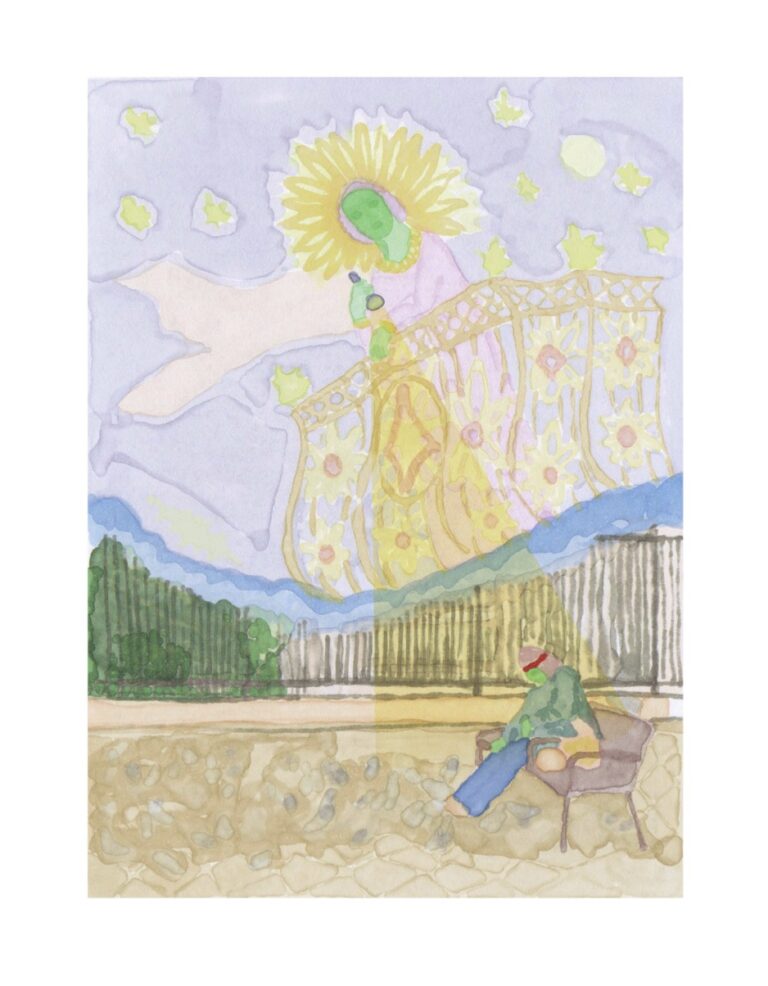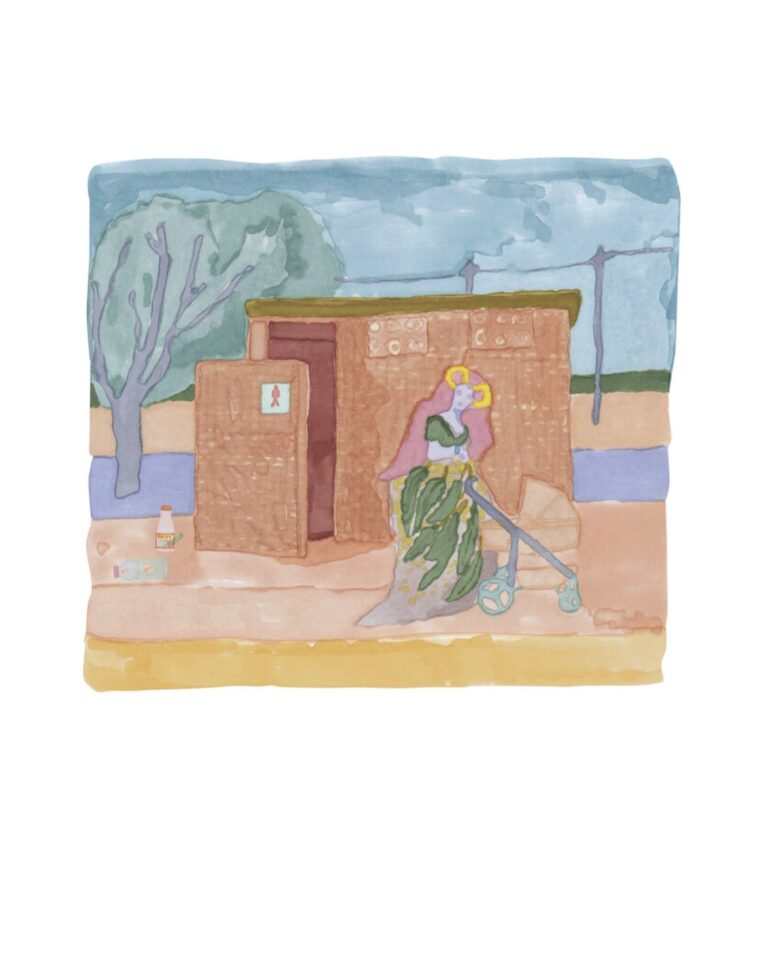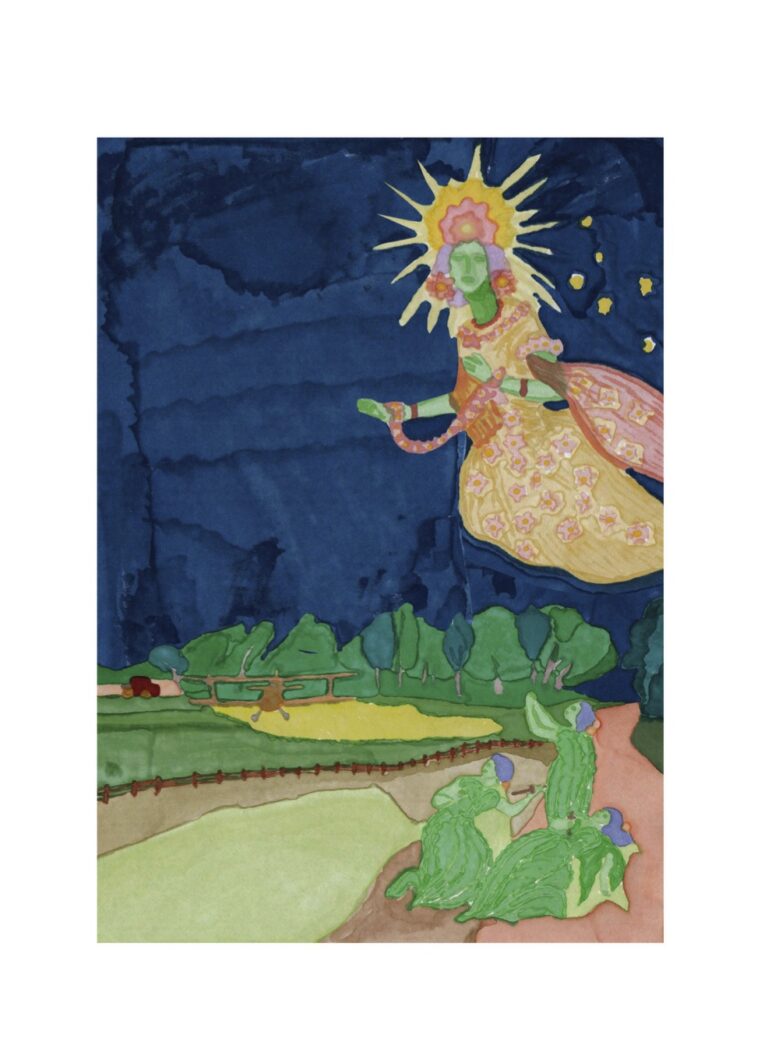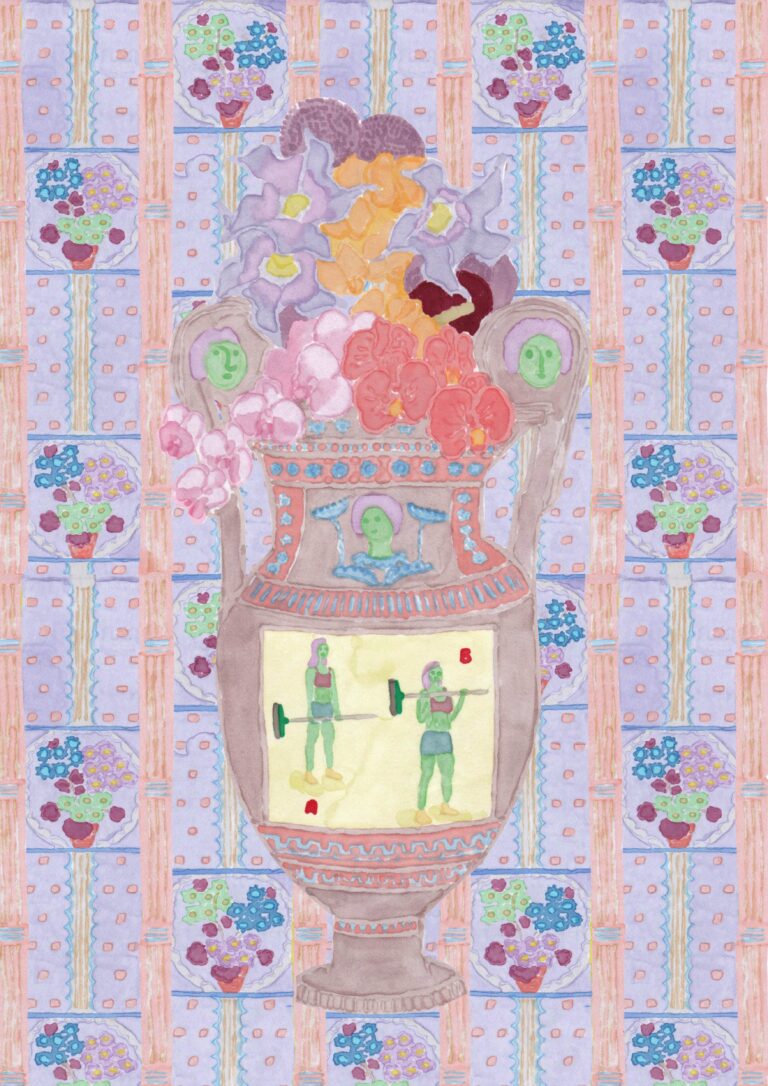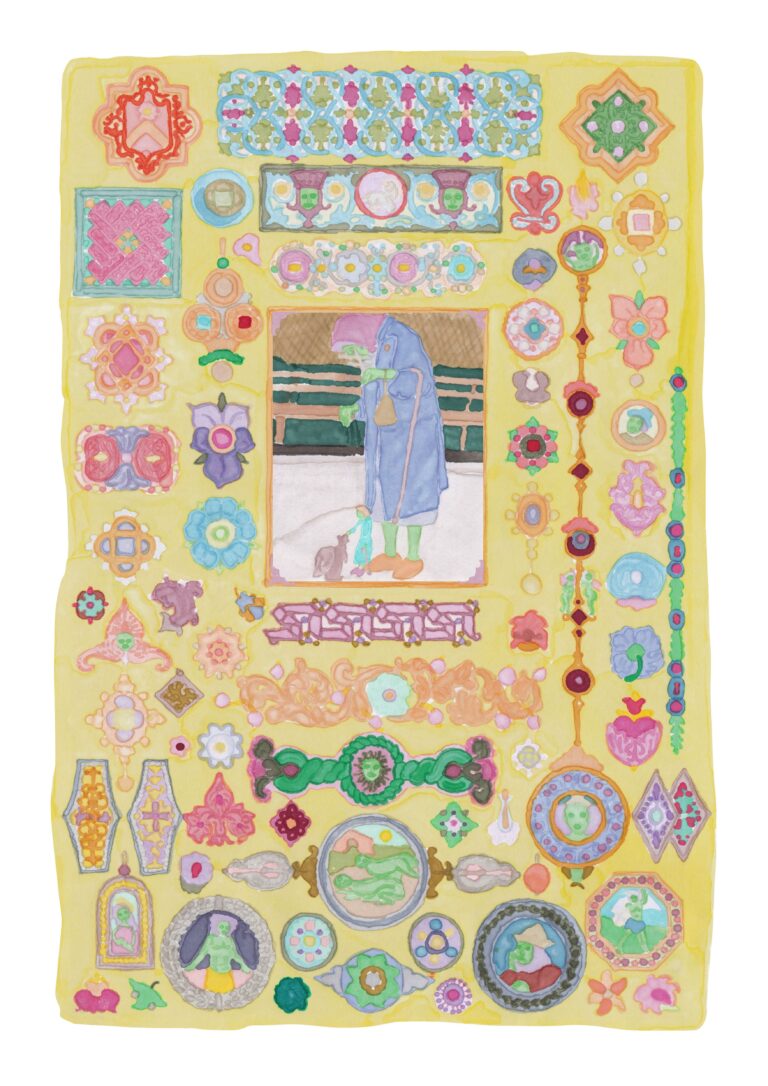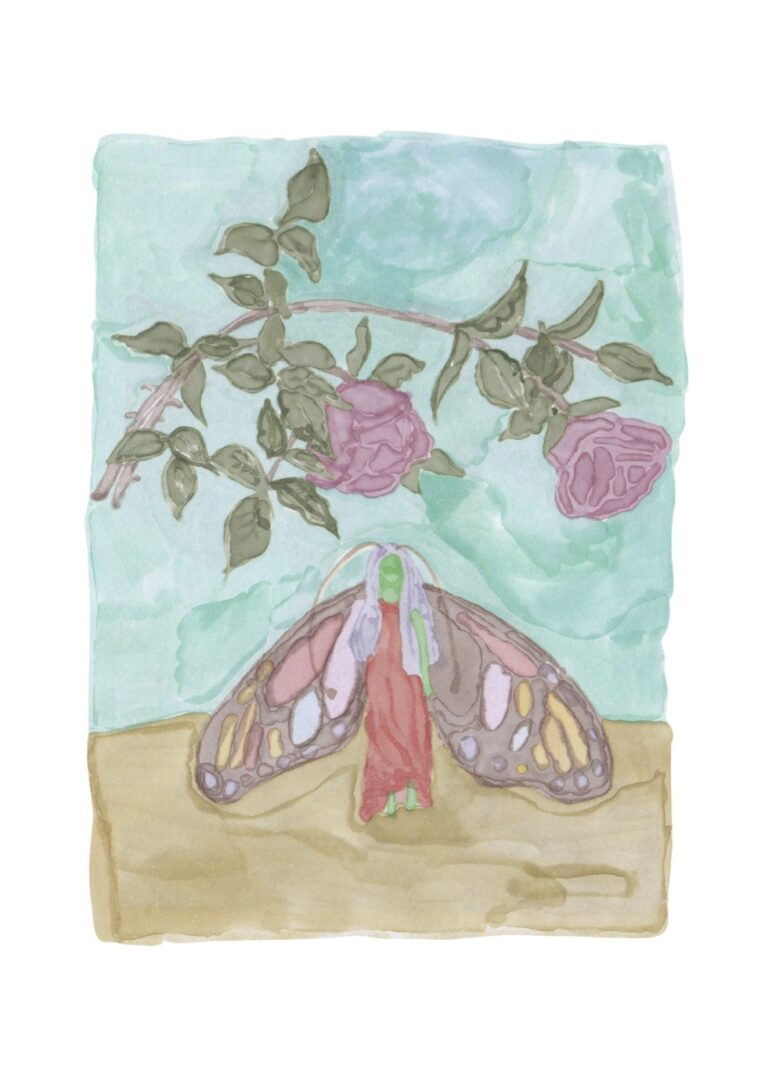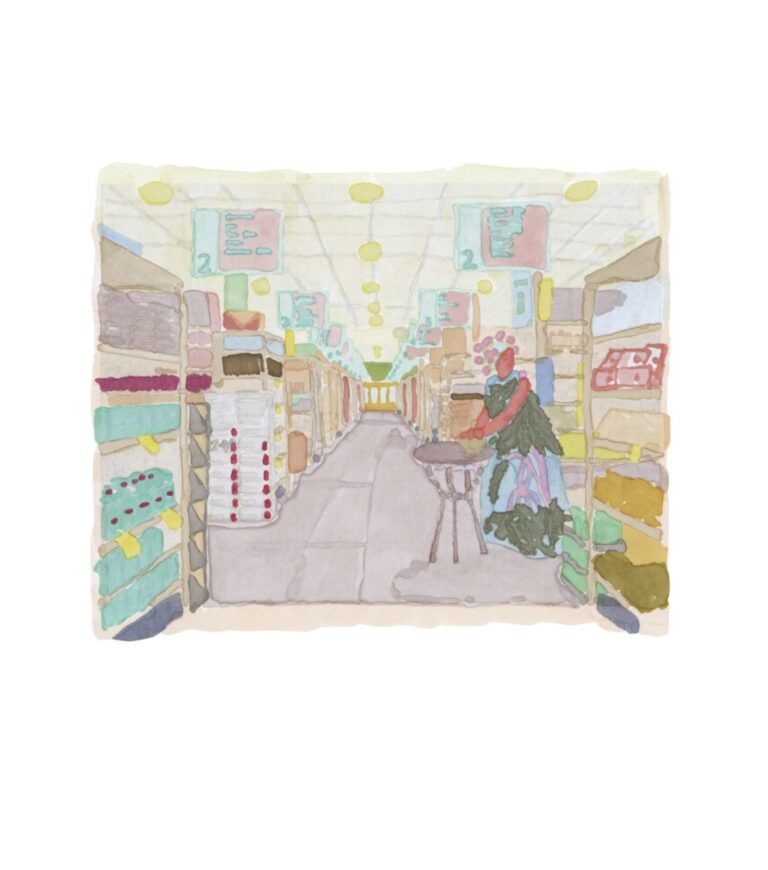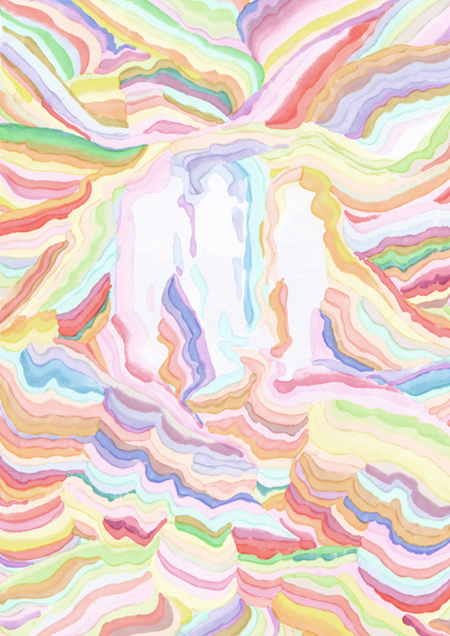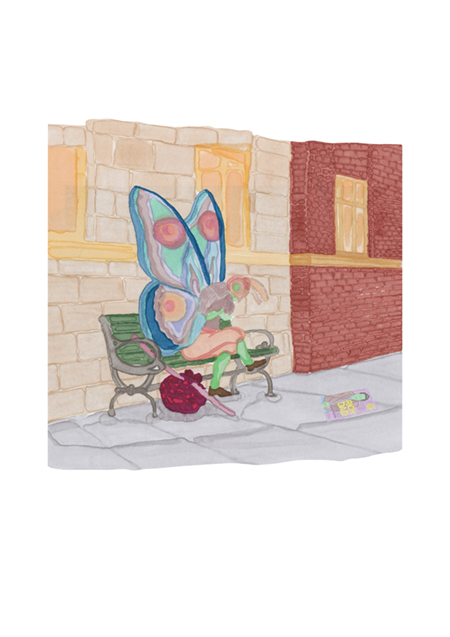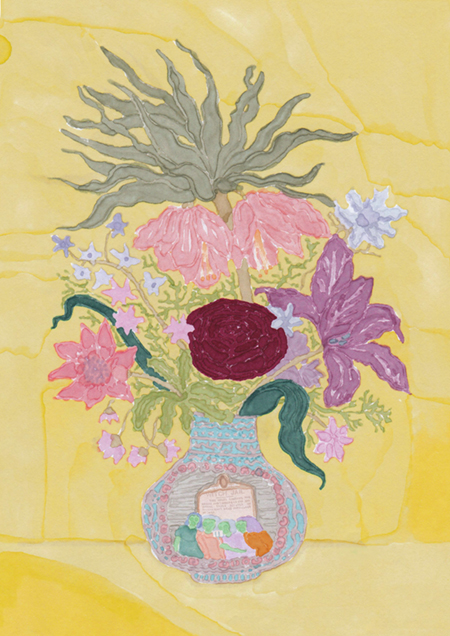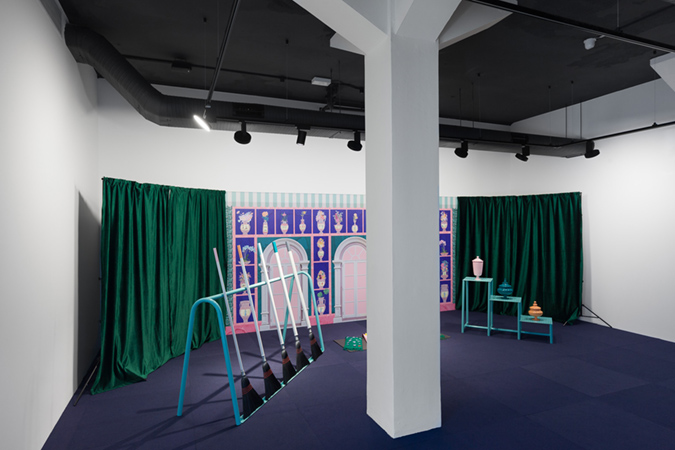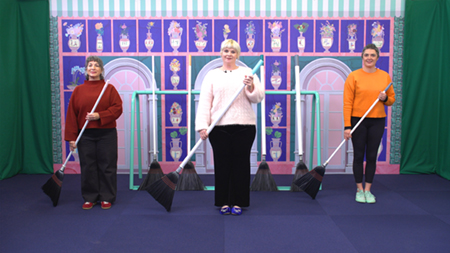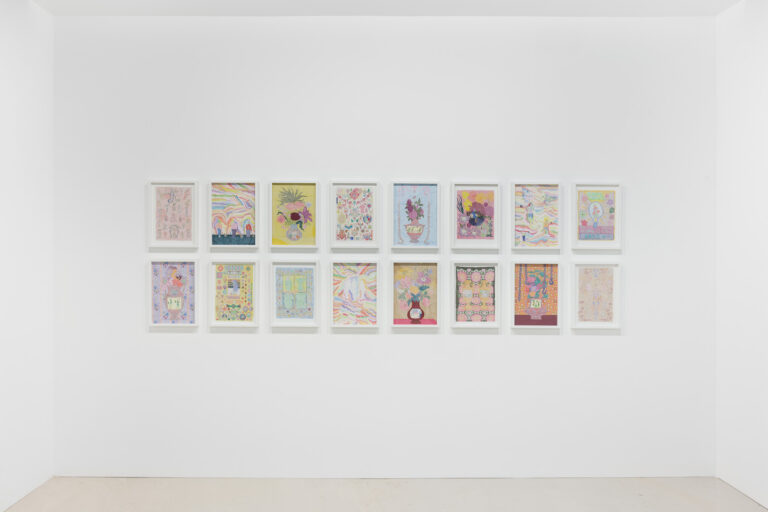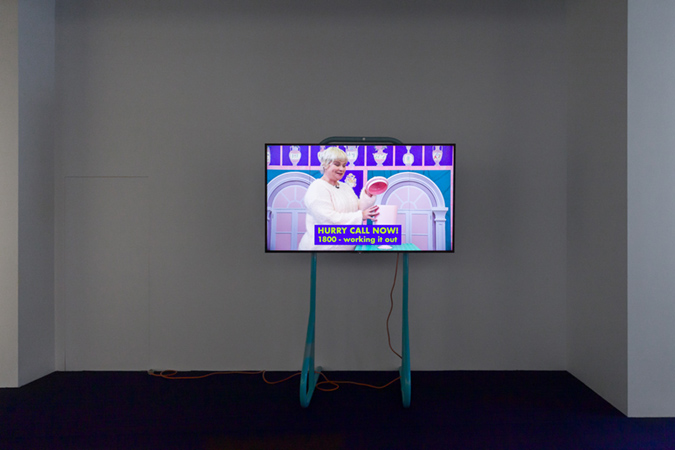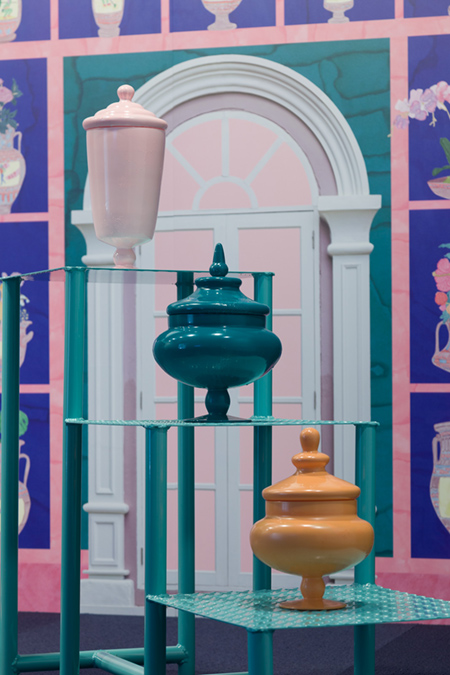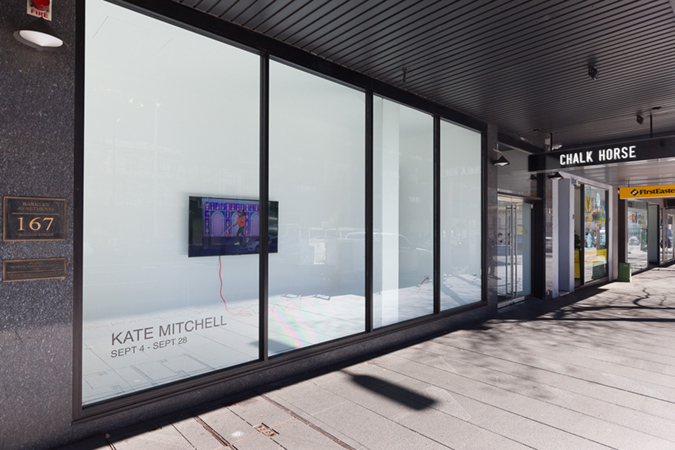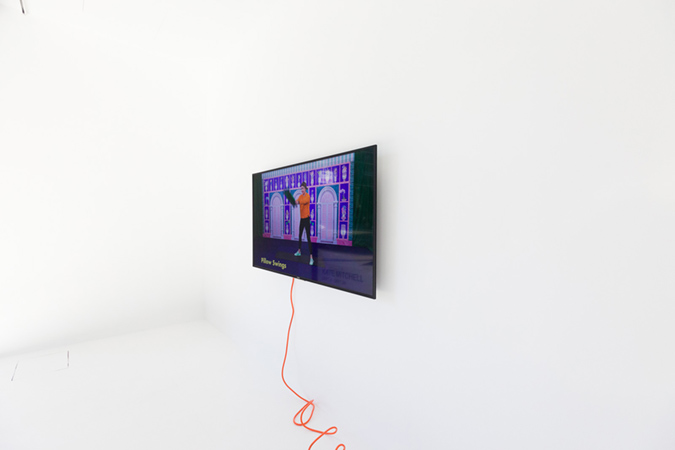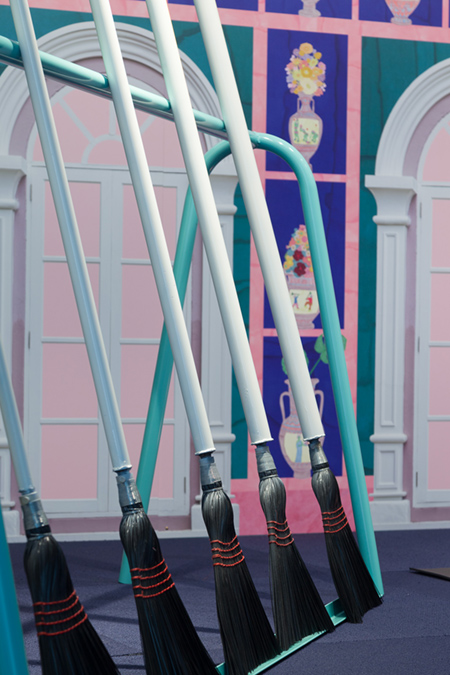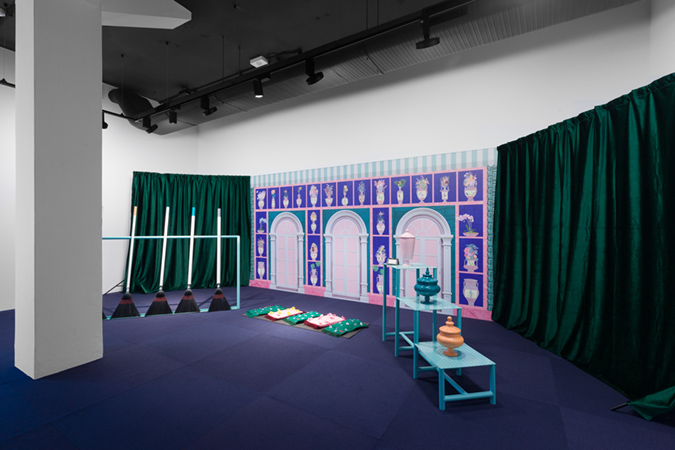
Artworks
Installations
ACT ONE
SCENE 1
‘The artist places an advert in the paper. “Lost a bet. Artist looking to carry a 75kg or under business man to work”.’1.
SCENE 2
‘The artist falls through endless shop awnings.’2.
SCENE 3
‘The artist leaps through images of sunsets and perfect moments, tearing their veneer.’3.
SCENE 4
‘The artist clings to the hands of a giant clock as it turns a full 24 hours.’4.
SCENE 5
‘The artist contemplates her own work.’5.
ACT TWO
SCENE 1
The stage is set: decorative curtains, wallpaper, brooms, throw cushions. An infomercial video plays, TV Shopping meets Jane Fonda. We are led through a series of exercises, repetitively sold on the virtues of the ‘Working it Out’ fitness system.
“Feel the burn”, Fonda enthused in her workouts. Kate Mitchell wants us to feel the burn too. The question is, what is burning?
SCENE 2
Kate Mitchell’s lounge room, a wooden table and two cups of tea. Kate tells me about this body of work and an inspiration, Sylvia Federici’s Caliban and The Witch.
Caliban – the son of a witch, much written-about slave in Shakespeare’s Tempest, a figure of considerable interest in post-colonial thought, the oppressed to Prospero’s oppressor.
CALIBAN: You taught me language, and my profit on’t
Is, I know how to curse.
SCENE 3
Caliban and The Witch is an account of women in the transition from feudalism to capitalism, of exploitation in the name of accumulation, of women as the (re)producers of Capitalism’s most essential commodity: labour-power.
It is the story of early resistance to the twin powers of capitalism and the church, of heretics, witches and sexual deviants. At the centre of this story is the systemic control of women’s bodies and devaluing of women’s socio-economic position.
Cue a millennium of oppression that shows no signs of slowing down.
SCENE 4
For more than a decade, Mitchell has made work around labour, value and magic. And Federici’s text traces the wild, ancient, violent context of this work. Kate Mitchell asks questions that have persisted since the Dark Ages, literally.
What does it mean to work? What does it mean to work as a woman? How do we value work?
Who labours for whom? Answers to these questions are buried in the history Federici documents. The reduction of women to a reproductive function, the violent and bloody oppression of communal property and relations, the intensification of labour exploitation – these are the foundations on which capitalism continues to build.
ACT THREE
Audre Lord famously asked: can the master’s tools dismantle the master’s house?
What are these women doing with their weighted brooms? Is ‘The Hammer’ really an exercise move? Were these ever the master’s tools? For Kate Mitchell, as for Sylvia Federici, the long fight against the oppressive and exploitive regimes of capitalism has never gone away.
What are the figures in these videos and drawings preparing for? Can the domestic sphere become a training ground? The ink a war cry? Kate Mitchell wants us to feel the burn and shows us how.
All that’s left is to burn it down: Capitalism, patriarchy, biological determinism, our culture of unfettered and exploitive accumulation.
Working it Out is a blueprint for revolution disguised as an infomercial: are you sold?
–
1. Kate Mitchell, Lost a Bet, 2011, single channel video, 19 minutes 30 seconds
2. Kate Mitchell, Fall Stack, 2012, 5 channel synchronised video installation
3. Kate Mitchell, Beyond Setting Suns, 2015, digital video, 40 second loop
4. Kate Mitchell, In Time, 2015, digital video, 24 hours
5. Kate Mitchell, Perspectives of the Artist, 2018, 60x60cm, Lambada prints
Kate Britton, 2019

